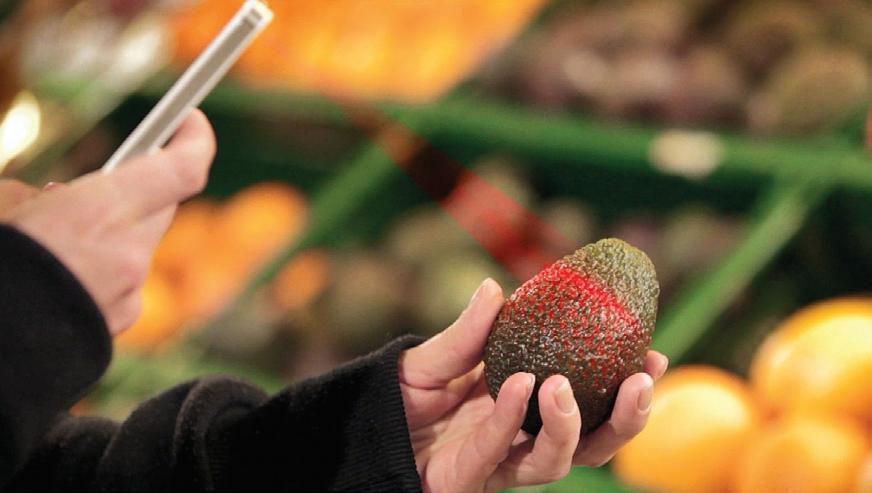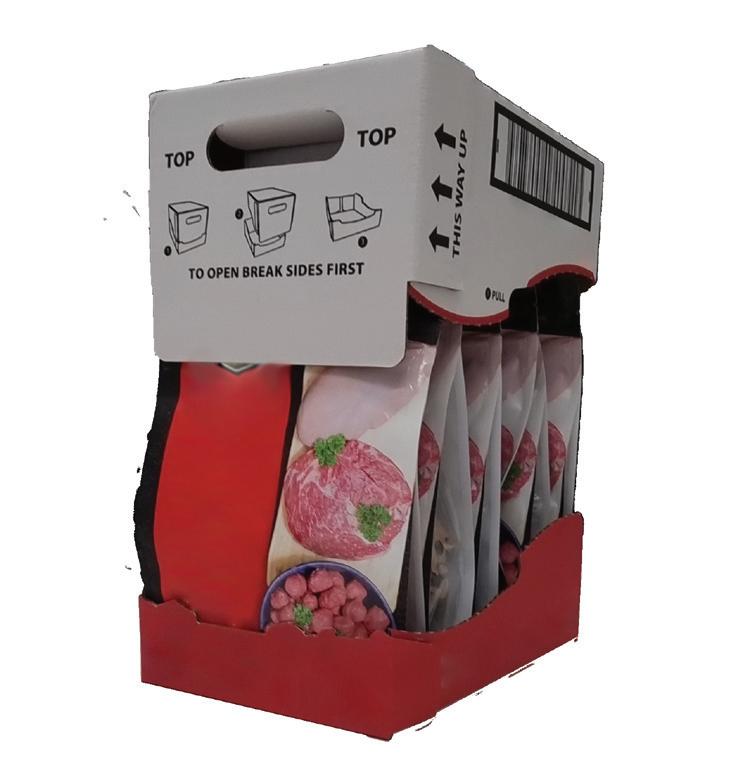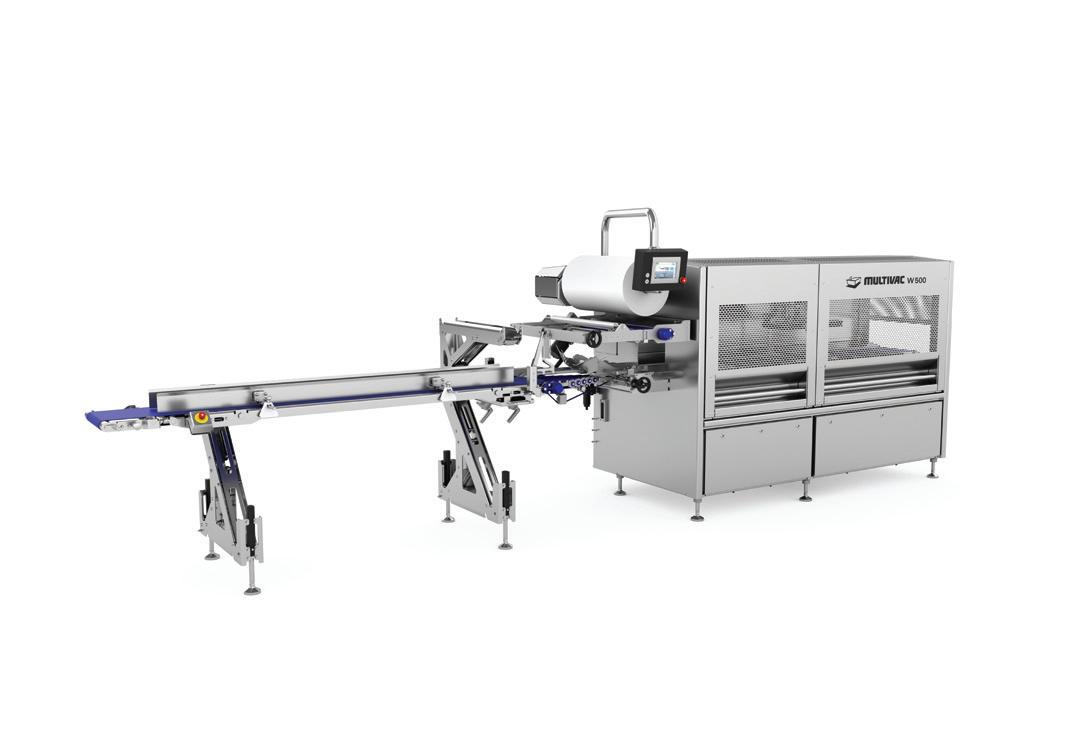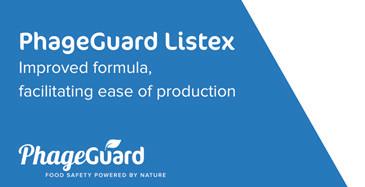
9 minute read
Mobile analysis
©stock.adobe.com/au/Chanwit Mobile analysis

© Fraunhofer IPMS


Example of a mobile on-site food analysis using avocados.
In food manufacturing, it is crucial to correctly identify visually similar substances, such as sugar and salt. Complex compositional analyses can also provide information about the quality, ripeness or freshness of products. Fraunhofer IPMS is currently researching and developing small energy-efficient scanner systems, which enable non-contact and mobile freshness testing onsite using near-infrared spectral analysis.
Near infrared (NIR) spectral analysis has been used in the laboratory to determine the food’s freshness. Highly accurate instruments are able to provide precise information about the condition of the product at the time of measurement. However, it becomes problematic when the sample changes in the period between sampling and measurement in the laboratory, or when results are needed quickly. Many new applications could benefit from NIR spectral analysis if the systems can be miniaturised sufficiently for mobile use and made available at low cost.
For this reason, the Fraunhofer Institute for Photonic Microsystems IPMS is developing small analysis devices that can be integrated into handheld devices such as tablets or smartphones.
The use of micro-electromechanical systems (MEMS) enables compact systems that can be manufactured cost-effectively in large quantities. The quality of the measurements is suitable for many applications despite the small size and the data can be chemometrically analysed onsite or online. This makes it possible, for example, to make direct statements about the ripeness and freshness of food. Other applications include checking correct mixing ratios in food processing or making selection of food for recycling or re-use processes.
Current research at Fraunhofer IPMS combines a simple technology for the MEMS component with a large addressable spectral range of the system and a high degree of modularity. The core of the system is a MEMS scanning mirror, which deflects the incident collimated light beams onto a grating mounted in the system. A selection of different spectral diffraction gratings is possible, which can be optimised and used for specific applications.
The current demonstration system, which can also be seen at the Fraunhofer IPMS booth at the Analytica trade fair in Munich from 21–24 June, addresses the proven spectral range from 950 to 1900 nm with a spectral resolution of 10 nm. Currently, the system achieves a build volume of about 2 cm³. However, further miniaturisation is possible.
The measurements are performed in typical arrangements depending on the sample properties, for example in transmission for liquid media or sufficiently transparent solids or in diffuse reflection for less transparent samples with sufficient scattering in cross-section. The optical coupling of the spectrometer is possible as free-beam optics or via coupled fibres. In the demonstration system, the detection of white powders is shown. This could be salt, sugar, starch or flour, but numerous substances that appear visually similar can be detected and assigned.
“In the context of evaluating food quality parameters, it has been shown that pressure and damaged spots can be detected very early on, using apples as an example, so that suitable selection allows recovery with the highest possible added value and minimises avoidable destruction,” said Dr Heinrich Grüger, scientist at Fraunhofer IPMS. Quantitative analyses are also possible using appropriate mathematical models and compositional analysis has been implemented to evaluate the quality of olive oil.
Applications in the agricultural context range from soil evaluation to monitoring growth to maturity evaluation for harvesting, then in the supply chain context, in storage, logistics and distribution. At the ‘point of sale’, an important application is for the selection of goods to be sold at a reduced price for immediate consumption just before they lose freshness, instead of disposing of them the following day. On the other hand, simpler systems can be developed for the private user at home.
© Fraunhofer IPMS
Demonstration system for the identification of white powders.
© Fraunhofer IPMS
Example of the miniaturised MEMS scanning mirror.
A plastic wine bottle made from 100% recycled plastic is launching in Australia. Coles will soon be carrying wines packaged in Packamama’s eco-bottles, with certain products from Accolade Wines’ Banrock Station and Taylor Wines’ One Small Step ranges packaged in the bottles available in select Liquorland and First Choice Liquor Market stores.
The bottles are made of PET and are 100% recyclable. They are 83% lighter than glass ones and due to their flat shape — intentionally designed to have a silhouette similar to traditional Bordeaux wine bottles — can be packed more tightly. This means more bottles can be transported in the same truck, saving money and reducing relative emissions per bottle.
Packamama has said that it is hopeful that the bottle, despite straying from conventional and historical designs, will prove to be a good choice for winemakers.
R&R Smith has upped its environmental commitments, ditching plastic in favour of organically recyclable packaging.
TIPA’s home-compostable bags will be used to package R&R Smith’s 1.5 kg bags of Pink Lady and Royal Gala apples.
The shift comes in response to consumer demand and Australia’s incoming phase-out of single-use packaging by 2025. R&R Smith’s entire produce pack — including packaging and any apple remains — can now be fully decomposed in home compost or sent to industrial compost in Food Organics Garden Organics (FOGO) bin, making the company’s products fully circular.
R&R Smith has been growing apples in its Tasmanian orchard since 1888 and opened Australia’s first certified organic apple orchard in 1998. Its apples meet the standards of organic certification through the NASAA (National Association of Sustainable Agriculture Australia). The company views the health of soils, people and the planet as one continuous, circular system. While researching compostable solutions, R&R Smith chose TIPA due to its high regulatory certifications to ensure authenticity, transparency, strength, quality and food-safe processing from the orchard to the consumer. TIPA supplies compostable films and laminates that mimic plastic, and recently expanded into the ANZ market. Its compostable packaging solutions perform like conventional plastic and are certified compostable, leaving no waste behind. R&R Smith provide apples for well-known brands, including Australia’s supermarket chain Woolworth’s and cider company Willie Smith’s Organic Cider.
Andrew Smith, Managing Director of R&R Smith, said: “We know that our customers want sustainable alternatives to singleuse plastic, and we are extremely proud to introduce the first fully home-compostable package for our pre-packaged fruit.
“TIPA has provided the best solution for our produce, and we are pleased that our packaging now returns back to organic matter, making our products fully circular.”
Chen Katz, Chief Revenue Officer at TIPA, said: “Interest in compostable packaging is booming and this has been driven by positive environmental legislation and consumer demand for plastic alternatives. TIPA’s technology is prepared to meet this demand, and we are ready to support the Australian market transition to compostable packaging.” Amcor Global www.amcor.com.au

CASE STUDY
Compostable packs for organic apples







Shelf-ready carton
The Abbe Wingman shelf-ready carton packaging has been designed with a different orientation that allows more product to be packed, resulting in more product on the shelf. The packaging is quick and easy to open in-store, and a clean die-cut front lip provides for good shelf presentation. The shape of the lip can also be customised for increased brand awareness.
With perforations located on the side of the carton, the chance of corner damage is reduced. This design also helps to improve the stacking strength when compared to a traditional shelf-ready RSC.
A common problem of product settling to the bottom of a pouch or bag can be resolved as the pouches can be loaded flat in the shelf-ready carton.
Designed for a variety of different types of packaged products, the carton can also provide possible supply chain savings as additional products may fit into the carton and pallet.
Abbe Corrugated Pty Ltd
www.abbe.com.au
Listeria Detected in 25g
To minimise this risk FMCG Industry Solutions is now offering a new unique anti-listeria product called PhageGuard Listex.
Contact us now for more information how this amazing product can stop the spread of listeria in the environment and Ready to Eat (RTE) Foods.

Official Distributor Email: sales@fmcgis.com.au Phone: (02) 9540 228 www.fmcgis.com.au
Flowpacking solution
The MULTIVAC W 500 universal flowpacking solution is suitable for packing a wide range of food products.
Designed for a wide spectrum of applications and products, it supports the use of sustainable films and paper-based materials.
On display at Anuga FoodTec 2022, the solution can be used for the automatic packing of burgers in a pillow pack. The pillow pack is traditionally one of the primary solutions for the packaging of food products, such as meat and sausages, cheese, snacks, bakery products and fruit. Pillow packs are also widely used to protect industrial and pharmaceutical products. The low material input and the ease of integration into other processes are the main features of this packaging solution, and the flowpacker complements the current MULTIVAC product range.
Features include user-friendly operation, easily accessible for cleaning and maintenance, and it can be used as a standalone solution or integrated into an automated line.
The solution is suited to the sustainable packaging of products such as minced meat, burgers, cevapcici, sausages, cheese and frozen fish. And bakery products such as baguettes, croissants and pizzas, as well as many types of fruit and vegetables, can also be packaged securely in pillow packs with efficient material usage.
The machine is built to MULTIVAC’s Hygienic Design. Servo drive technology ensures that maximum speed and optimum process control are achieved. Products with a maximum width of 200 mm and a height of up to 120 mm can easily be packed — with or without a tray.
Other features include the independent speed setting of the rollers for crease-free longitudinal sealing, and cross sealing thanks to recipe-based control of sealing temperature and pressure, as well as an integrated gas analysis system for MAP packing with modified atmosphere.
Offering an output of up to 120 packs/min or a film speed of up to 30 m/min, the machine can also integrate marking or labelling solutions.
All process and pack parameters such as type of product, pack format, sealing pressure and temperature are recipe-based, and they can be set and called up with just a few clicks on the user-friendly HMI. Product changes can also be performed in a short period of time.
MULTIVAC Australia Pty Ltd
www.multivac.com.au










